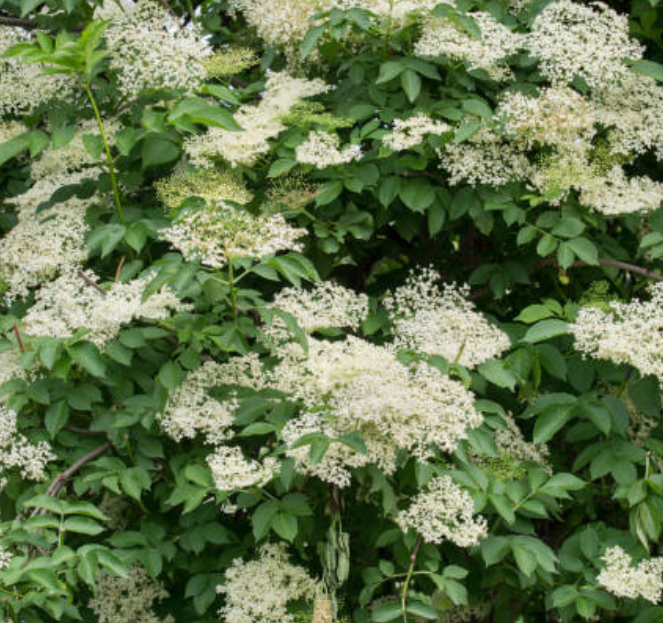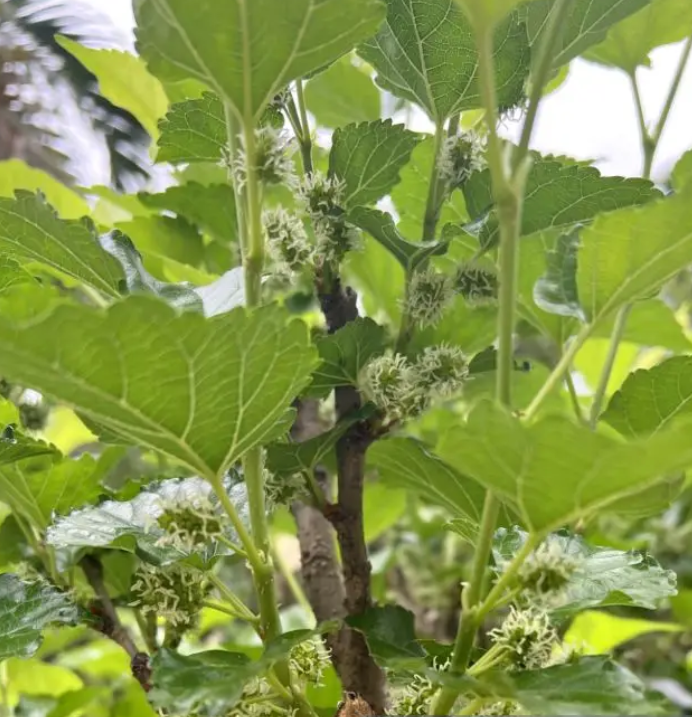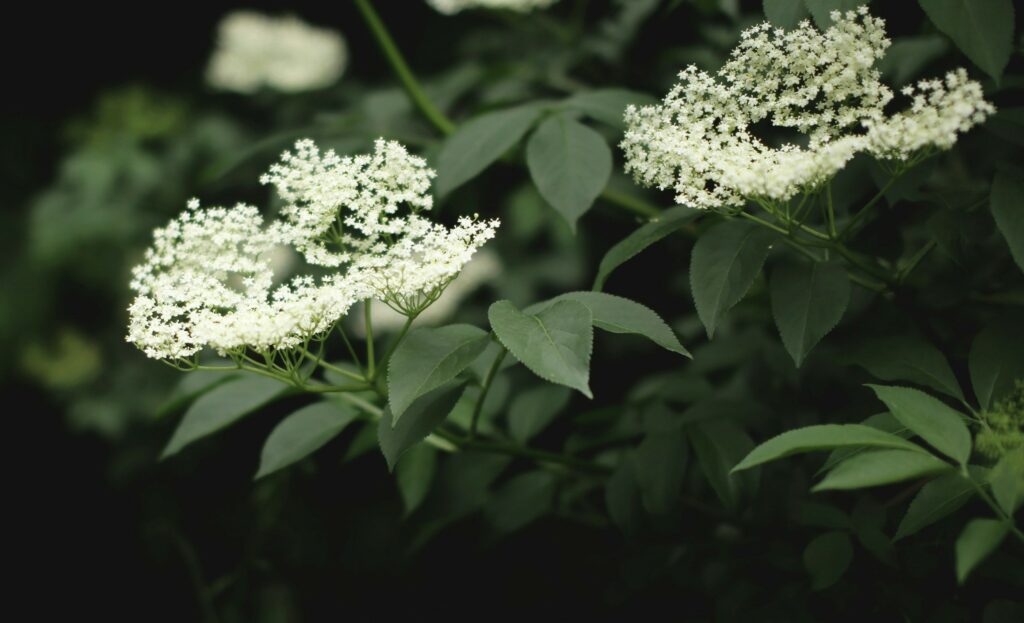Welcome back for part 2 of identifying spring blossoms that tell you which fruits will be on their way soon.
Autumn olive / Speckleberry / Autumnberry
Native to Asia, autumn olive is somewhere between a hefty shrub and a small, tough, sprawling tree up to 16’ tall. Alternating 2” to 3” leaves are dark dull green on top, and distinctly silvery underneath. The bark on older autumn olive trunks peels in long, thin, narrow strips, but on smaller trunks and branches it is smooth and grayish green. An invasive plant, it tends to form dense hedges along roadways and fence lines.
In mid to late spring the shrub produces copious light-yellow flowers in crowded clusters that have a very strong fragrance.


Blackberries and Dewberries
Native throughout North America, blackberries grow in tangled thickets of reddish-brown, very thorny arching canes up to 9′ tall. Leaves are 3 to 7-parted and up to 7″ long. Dewberries are a trailing variety of blackberry that grows on canes up to 12’ along the ground. Both plants are abundant and can be found in thickets along roadsides and trail edges, in fields, and in woodlands.
Both plants bloom with sweet-smelling, five-petaled white flowers about as wide as a quarter.
Raspberries, blackcaps and red
Native to much of North America,raspberries grow in tangled thickets of reddish-brown, bristly canes 2’ to 4’ high. The leaves are pointed at the tip and rounded at the base with irregular toothed edges. Wild raspberries can be found along riverbanks and road edges and in forest openings and borders.
Red and Black wild raspberry blossoms look much the same, with nondescript five-petaled white flowers appearing in early summer.


Elderberry
This native shrub grows up to 13’ high, with smooth gray bark that is irregularly furrowed and ridged. The opposite feather-compound leaves are divided into 5 to 11 coarsely toothed, pointed leaflets, each 3” to 4” long. The common elder often grows in large, dense stands in moist, well-drained sunny sites. Look for it in marshes, along riverbanks, and in moist woods and thickets.
In late spring, the elder bears sweet, lacy white flowers in flat-topped to slightly rounded clusters that spread over 6″ across
Purple flowering raspberry
Native to eastern North America, this member of the rosaceae family grows 3′ to 6′ tall with a spread potentially reaching upwards of 12 feet. It suckers freely to form small colonies. The large, maple-like leaves and lack of thorns make it easy to identify. The shrub grows primarily in mountain forests, outcrops, and thickets. It will grow in full sun to full shade, and prefers moist, well-drained soil.
In summer, rose-purple, sweetly-scented flowers cover the shrub. Blooming will continue from June to August, even as the fruits ripen.


Mulberry
There are two common mulberry tree species, the native red and the Asian white. The red mulberry reaches a height of about 65′, while the white tops out at 80′. The red-brown bark has distinctive vertical furrows. Both species have oval, toothed, alternate leaves, some lobed, some not. Mulberry trees are quite tolerant of drought, pollution, and poor soil, and can be found in residential neighborhoods, parks, in open woods, along field edges, and near fresh water.
In mid-spring, tiny male and female flowers hang on separate small, slender, inconspicuous spikes.
Happy hunting!



